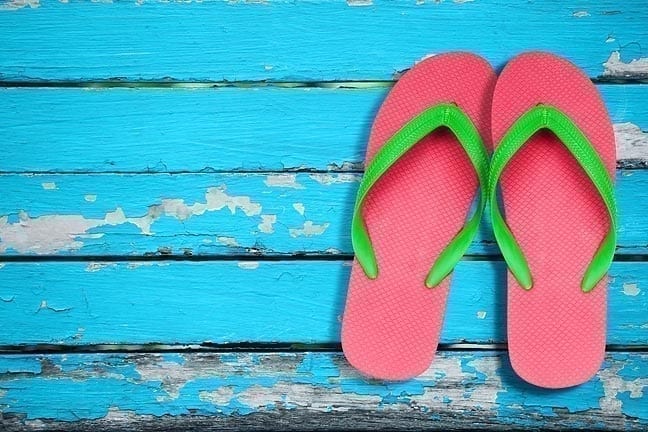Flip-flops have become a staple of summer apparel, and for good reason. No one can deny the carefree feeling of donning your summer flip-flops for the first time in late spring. But alas, flip-flops are more sinister than they appear.We all know someone who’s flipped in their flops. I took a nasty spill last summer when I tried sprinting from the car to the dry cleaners before they closed. They stayed open an extra few minutes for me, but not before they had a good laugh at my expense.So what exactly makes flip-flops so treacherous?A study done in 2010 at the University of Louisiana highlighted the issues. For one, as any flip-flop connoisseur will know, you often have to curl your toes just a bit to grab the flip-flop to make sure it stays on your foot. This seemingly innocuous behavior actually causes the muscles in the front of your shin to work harder, causing strain that isn’t otherwise present when you’re walking barefoot or in sneakers.MORE FROM MOTHER NATURE NETWORK: Why Do Feet Fall Asleep?Another common culprit? Flat-footed flip-flops — without heel or arch support. Flip-flops that have no arch can make you flat-footed even if you aren’t, because without proper arch support, your feet begin to turn inward. Conversely, without proper heel support, your feet can slide around, making your legs work harder to keep your shoes on.Also, flip-flops that are too flimsy cause us to have a shorter stride length, again putting unnecessary strain on our legs and feet.So is that it? Are the blithe flip-flop wearing days of summer long gone? Not to worry, my friends, there is some good news. As more evidence shows that flip-flops can be hazardous to our feet, more companies are making flip-flops that provide the right support. So what should you look for?Flip-flops with good heel and arch support, for one. For two, flip-flops made of materials that bend, but not too much. A good rule of thumb, according to Dr. John Whyte, chief medical expert at the Discovery Health Channel: If the flip-flop’s heel can touch the toes when you bend it — ix-nay on the andal-say.MORE FROM MOTHER NATURE NETWORK: Shoes That Convert From Flats to HeelsAlso, he recommends not wearing flip-flops when you do activities that could be hazardous to your toes (such as hiking) and also not wearing flip-flops for long walks, when sneakers would provide you much better support.Not sure where to start looking?The American Podiatric Medical Association has made looking for the right flip-flop easy by listing all of the ones that have received the group’s seal of acceptance here. A minor note — flip-flops that have the proper support for your foot are definitely going to be pricier than the flip-flops you can find in your local drugstore. A good pair will usually run you upwards of $50. But you can bet I’ll be wearing a pair that provides me the right support come summertime, even if they cost me a pretty penny.MORE FROM MOTHER NATURE NETWORK: Are Running Shoes Bad For You?
© YouBeauty 2024




































